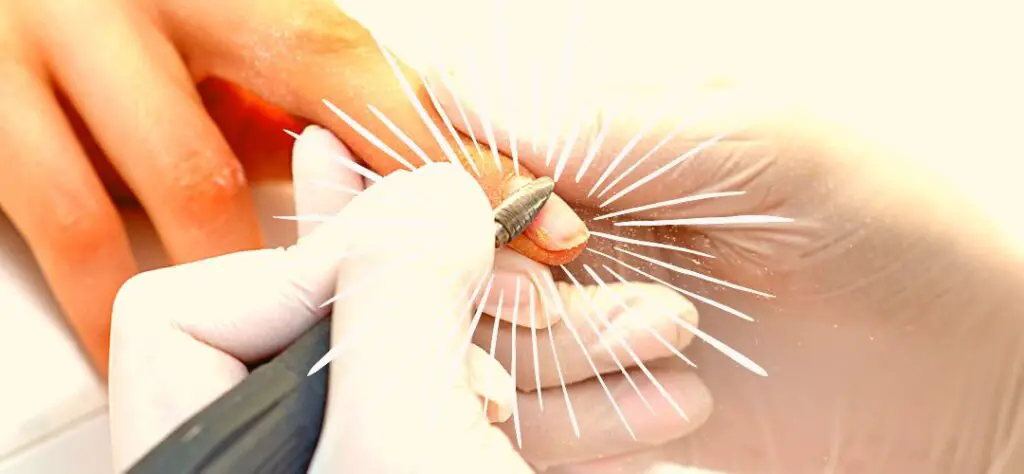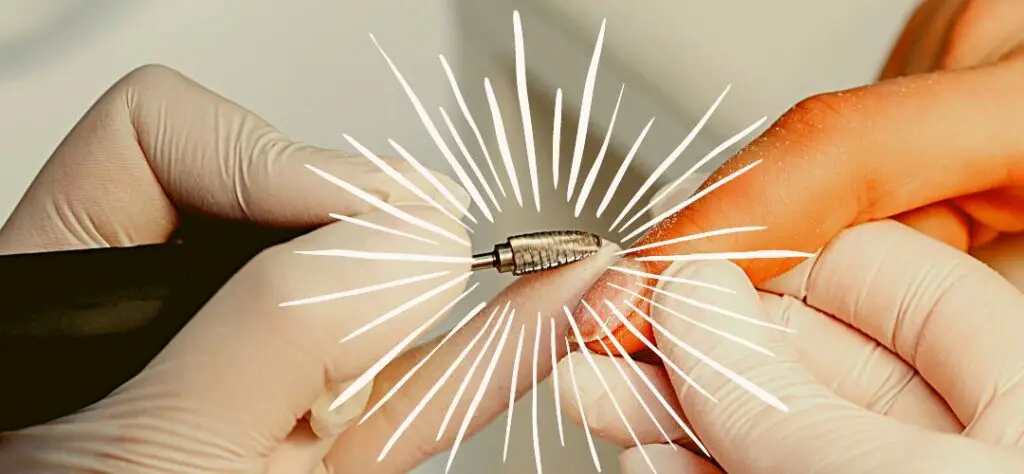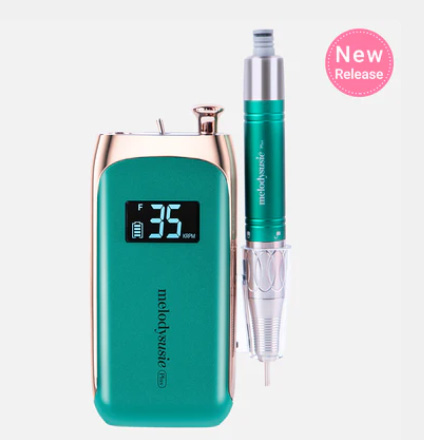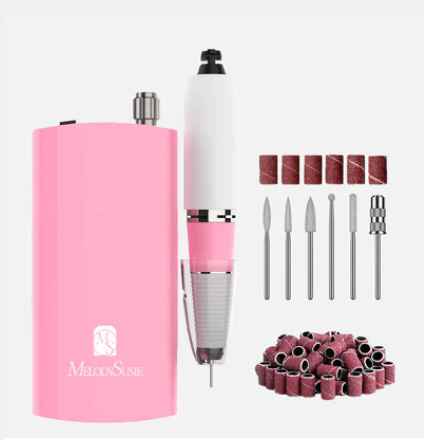How many rpm should a nail drill be? | This is a question everyone has when they’re trying to get their manicure done right. Who wants to spend an extra hour buffing away at nails, just because the drill was set too slow? But what is the optimal speed for a nail drill? Let’s find out! In this article, we’ll look at how to choose the perfect rpm for a nail drill so your manicure can look salon-worthy every time. Ready to get drilling? Let’s go!
What rpm is best for nail drill?
The ideal rpm for a nail drill depends on the task you are trying to accomplish. If you need to remove gel polish, then a slower speed of 3,000-5,000 rpm is best in order to avoid damaging the nail bed. For filing and shaping nails, 3,000 – 20,000rpm is recommended as it will give you better control over the filing process. Finally, if you need to buff and shine nails, then a speed of 8,000-10,000 rpm is recommended for achieving optimal results.
Is higher rpm better for nails?
It depends on the task you are trying to accomplish. Generally speaking, higher rpm is better for filing and shaping nails as it will allow you to have more control over the process. Also, if you need to buff or shine your nails, then a speed of 8,000-10,000 rpm is recommended because it can help achieve the best results.
However, when it comes to removing gel polish, a higher rpm should be avoided as it can cause damage to the nail bed. A slower speed of 3,000-5,000 rpm is best for this task in order to remove the product without damaging your nails.

Is there a standard rpm rate?
When it comes to the ideal rpm for a nail drill, there is no one-size-fits-all answer. The best speed depends on the task you are trying to accomplish and varies between 3,000 – 20,000 rpm. For general filing and shaping of nails, a medium speed of 8,000-10,000 rpm is recommended.
How do I adjust the speed of my drill?
Adjusting the speed of your nail drill is a fairly straightforward process. Most modern electric drills have variable speed settings that are easily accessible, allowing you to adjust the rpm as needed for different tasks. To begin, make sure the power switch on your drill is in the “off” position and unplug it from the wall outlet. Then, locate the speed control knob or lever on the side of your drill. This is typically a marked dial with numbers and/or symbols that indicate the various speed settings.
Can I get finer results with higher rpm?
The answer to this question is yes and no. Generally speaking, higher rpm is going to produce finer results when it comes to filing and shaping of nails. This is because a faster speed can help you achieve more precise detailing without having to apply too much pressure. For example, if you are filing an uneven or rough edge on the nail, then a higher drill speed can help you get a smoother and more even finish.
However, when it comes to buffing and shining nails, a higher rpm is not necessarily better. This is because the high speed can cause the buffing pad to spin too quickly, which can create an uneven or patchy finish on your nails. Therefore, it is important to use a lower speed of 8,000-10,000 rpm when buffing and shining your nails in order to achieve optimal results.
Are lower rpms safer for newbies?
For those new to manicures, lower rpms can be much safer than higher speeds. When using a nail drill, having the right speed is key to avoid damaging your nails and cuticles. Newbies should start with a slower rpm so they can practice and get used to the tool before upping the speed. Starting at a slower speed also gives them more time to adjust the pressure and angle of the drill bit before going too fast, which can help prevent mistakes.
Using a lower rpm also helps minimize chances of overheating the drill bit and burning your skin, as well as reducing risks of creating dust particles in the air. The slower speed will help you control the filing process better, and gives you a chance to practice until you are comfortable enough with the tool before going faster.

Can high rpm damage skin or cuticles around the nail bed?
Yes, high rpm can potentially damage the skin or cuticles around the nail bed. When using a nail drill at a higher speed, there is an increased risk of creating heat and friction in the area. This can cause burns and irritation to the skin, as well as cracking or splitting of the cuticles which may lead to infection in extreme cases.
In addition, high rpm can cause the drill bit to vibrate more than usual and create dust particles in the air. This can be hazardous to the eyes, nose and throat, and may even lead to respiratory issues. Dust particles can also enter into open wounds around the nail bed, leading to infection and irritation.
To avoid any potential damage from high rpm, it is important to apply the least amount of pressure when using the nail drill. This will help to minimize any friction and heat in the area, as well as reduce dust particles from being created.
Is it better to start with a lower rpm and then increase it?
When it comes to using a nail drill, it is generally better to start with a lower rpm and then increase it as necessary. This can help ensure that the user has full control over the process and avoids any potential damage or irritation to the skin or cuticles around the nail bed.
Using a low speed setting allows you to practice and get used to the tool before switching to a higher speed. This will help you familiarize yourself with how the drill works and how much pressure is needed when using it. It also gives you enough time to adjust the angle of the bit before going too fast, which can help prevent mistakes or accidents from happening.

Does the bit type impact the required rpm?
Yes, the bit type can have an impact on the required rpm of a nail drill. Different bits are designed to be used at different speeds, depending on their purpose and function. For example, finer bits require lower rpms in order to achieve more precise detailing without causing any damage or irritation to the skin and cuticles around the nail bed.
Coarser bits, on the other hand, are designed to be used at higher rpms in order to file and shape the nails quickly and efficiently. These bits require more pressure when using them, so they should only be applied with a higher rpm setting in order to get the desired results without damaging the nail bed area.
What is the maximum safe speed for a nail drill?
When it comes to using a nail drill, there is no one-size-fits-all answer when it comes to the safest speed. The best way to determine the maximum safe speed for your nail drill is to start at a lower rpm and gradually increase as you become more comfortable with the tool.
Are there any risks associated with using an incorrect rpm setting?
Using an incorrect rpm setting on a nail drill can have serious consequences. Depending on the type of bit being used, an incorrect rpm setting can cause damage to the nail bed area or even irritation and burns to the skin. Using too high of an rpm with a finer bit, for example, can cause overheating which can result in burning or charring of the nail bed. This can lead to discoloration, cracking, splitting, and even infection if not treated properly.
Using too low of an rpm with a coarser bit can also be problematic as it may cause the bit to chatter or jump around in the nail bed area, causing deep gouges or cuts. This type of injury can be very painful and may even require medical attention in order to properly heal.

Does nail drill speed depend on how much pressure I’m applying to nails?
Yes, the amount of pressure you apply to your nails when using a nail drill can significantly affect the required speed. When applying too much pressure, the nail drill bit may be forced to rotate faster than it is designed for and this could potentially lead to overheating or even burning of the surrounding skin and cuticles. This is why it is important to regulate the amount of pressure that is applied and to only use a nail drill at its recommended speed.
Should I use higher rpm when filing acrylic nails?
When it comes to filing acrylic nails, higher rpm settings tend to be more effective and efficient. Acrylic nails are much thicker than natural nails and require more pressure when using a nail drill in order to accurately file away the product. Since acrylics are harder, higher rpms can help break down the product faster without having to apply too much pressure, which can cause discomfort to the nail bed area.
When filing acrylic nails with a nail drill, it is important to use the correct bit for the job. Coarser bits are ideal for sculpting and shaping thick acrylics and should be used at higher rpms in order to achieve desired results quickly.
Conclusion | How many rpm should a nail drill be?
When it comes to using a nail drill, the optimal rpm setting varies depending on the bit type and the purpose. Finer bits require slower speeds in order to prevent irritation or burning of the skin around the nail bed, while coarser bits require higher rpms in order to break down thicker products like acrylics more efficiently. It is important to regulate the amount of pressure you apply and to only use a nail drill at its recommended speed in order to reduce the risk of any type of injury.
Warning:
Use the nail drill only according to the manufacturer’s instructions
and make sure to use the correct speed setting!





